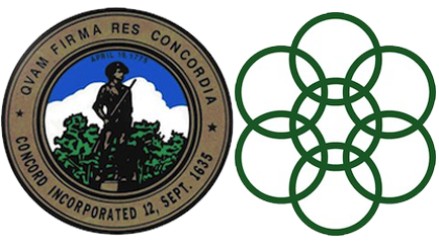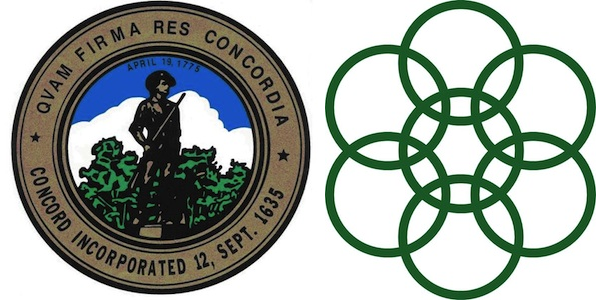Business trips in a Japan are serious business. First, formal documents must be drawn up well in advance (purpose of trip, itinerary etc.) and passed around from desk to desk receiving a “Hanko” (a kind of personalized stamp used in Japan that acts like a signature) from each person in a long chain of command. Once these details are confirmed, a budget for the trip is determined, and each lucky traveler receives a stipend for his/her travel and accommodation expenses in a special envelope. How these amounts are calculated, I’m not quite sure, but they are exact. More often than not, this means receiving an envelope with a mixture of bills AND coins. If your budget is something like $157.45, that’s what you’ll get, including the 4 dimes and a nickel.
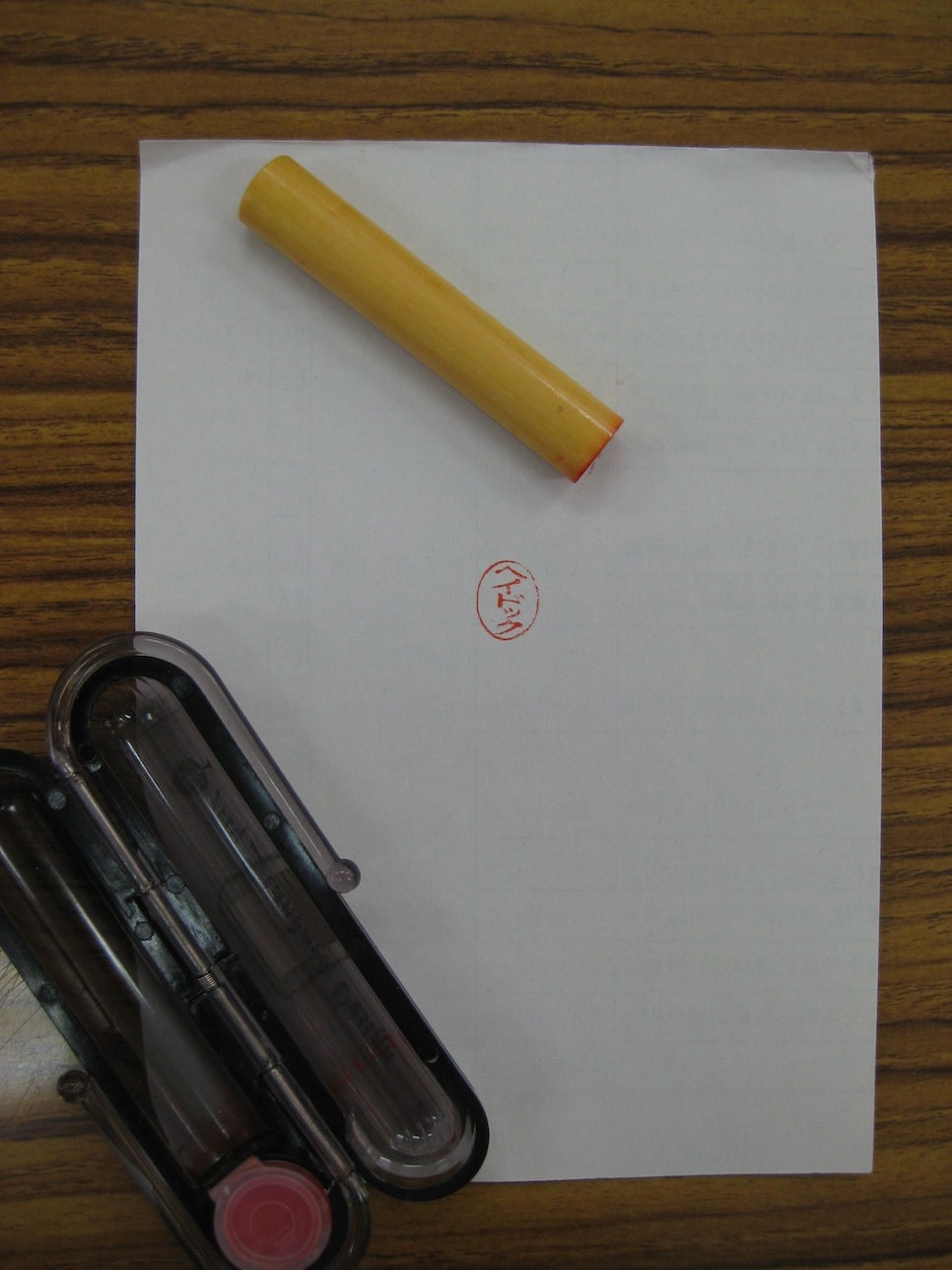
It says: “Haydock” (or “Heidokku” if your Japanese pronunciation is good).
For an ALT or CIR in Japan, these kinds of trips are quite rare, so it’s hard not to feel at least a little excited when the opportunity arises. It was no different in my case when, earlier this month, a small envelop clinked its way onto my desk (yes, there were coins). I was to take a one-night trip up to Sapporo with two of my coworkers, Emi and Teraya-San, to give a special presentation at a “Massachusetts Day” event at the Hokkaido Prefectural Office in Sapporo.
Hokkaido and Massachusetts have been sister states since 1990, and the Massachusetts Day event is held at the Sapporo Prefectural Office to celebrate the date (February 7th) when the two regions entered into this formal relationship.

It reads: “Introductory Exhibition for Massachusetts, U.S.A. ~Massachusetts Day~ (2/6~2/7)
As a lunch-time guest lecturer I was asked to present a little on the history of the connection between Massachusetts and Hokkaido, as well as Concord and Nanae. Having given presentations on my hometown before, I already had a lot of Concord-related material, especially material which highlighted the similarities and differences between Concord and Nanae. I realized, however, that I didn’t know enough about the roots of the Massachusetts and Hokkaido connection, and so I needed to do a bit of research. For this I turned to sources provided to me by Concord’s Tom Curtin, and I visited Nanae’s History Museum a few times to speak with its curator, a man named Mr. Yamada, who knows a whole lot about early Hokkaido/Nanae history.
My research focused on two men from Massachusetts: William Clark and William Wheeler, who played a huge role in the early development of Hokkaido. Clark is famous throughout Hokkaido, and greater Japan, for establishing Sapporo Agricultural College in 1876, which would go on to change its name in 1947 to Hokkaido University and become one of Japan’s top schools. Clark only served as president of the college for about a year before returning to America, but it’s clear that he made a lasting impression. At the moment of his departure, Clark famously turned to his Japanese students and shouted, “boys, be ambitious!” Every Japanese person I have met to date knows this phrase. There is even a shady karaoke bar in downtown Hakodate (the city adjoining Nanae) called “Boys Be Ambitious” (playfully nicknamed “Boys Be”).
Reading about Clark, it becomes clear that he had a very charismatic and impacting personality, which sheds some light on why his memory is still so well preserved here in Japan. Students are quoted as remembering his ethics lectures in which he implored them to “be gentlemen” above all else. He was even able to convince those around him, including the Governor of Hokkaido, Kuroda Kiyotaka, to look aside as he used bibles in the classroom to teach his students Christianity, a religion that was still banned throughout the island at the time. Many of his students would go on to convert. Clark fit the role of mentor and leader perfectly for a region of Japan that was just starting to develop.
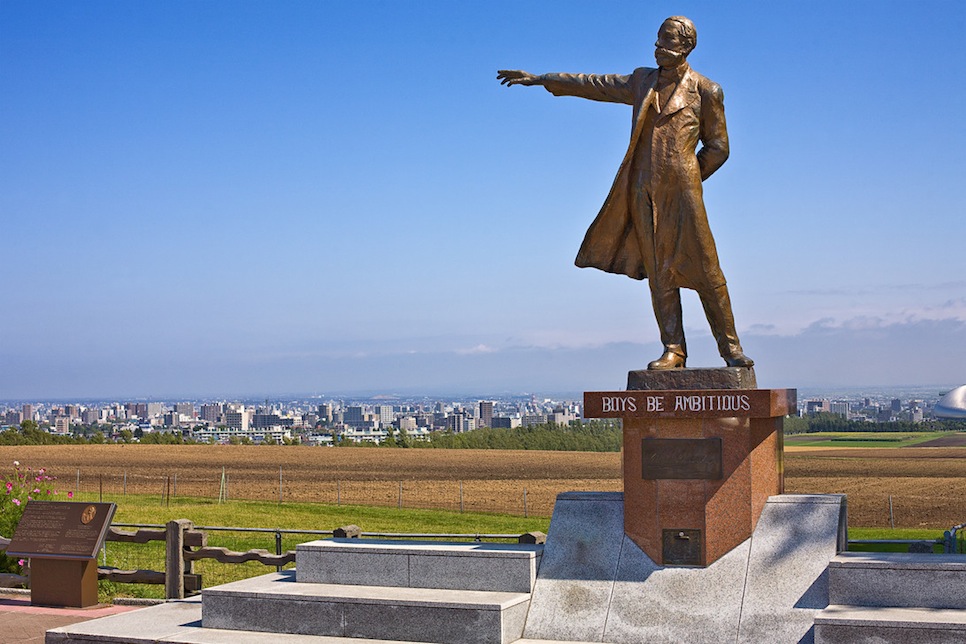
William Wheeler was a born and bred Concordian. He studied under Clark in Massachusetts and came along to Japan in 1876 to help him in establishing Sapporo Agricultural College. Wheeler would go on to become the second president of the school after Clark returned to America. Whereas Clark’s personality and leadership seemed to resonate with his Japanese students, Wheeler’s impact was more concrete. Most famous among his various engineering and architectural contributions to Hokkaido is the main building of the Sapporo Clock Tower, which he originally designed to be a drill hall for students at Sapporo Agricultural College. The Clock Tower remains one of the oldest buildings in the city, and a major tourist attraction.
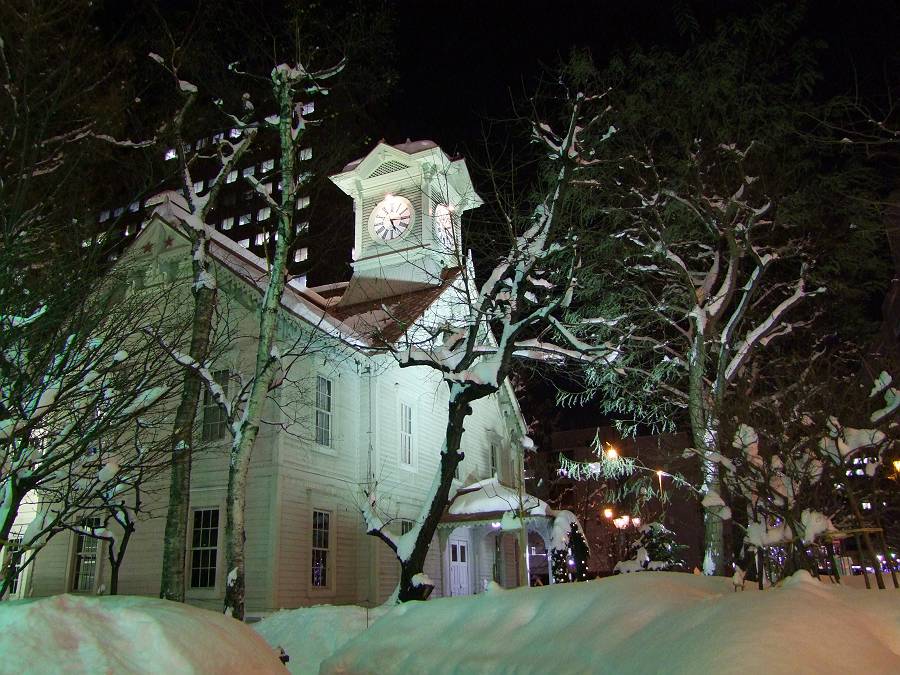
It’s important when reading about these men to remember that these were some of the very first westerners living and working in Japan, not to mention Hokkaido. The Meiji Restoration, which largely signaled the end of Japan’s long period of isolation and began its rise as an industrial power, had occurred not ten years before Clark and Wheeler arrived. Wheeler writes in letters that he and Clark stopped to watch street performances in Tokyo, but that the crowds of people stopping to stare at them soon grew larger than the audience for the performers. I can only imagine what an adventure it must have been for these two guys from Massachusetts to travel by steamship half-way around the world, and arrive in 19th century Japan. Not to mention, when they got there they spent much of their time riding horses around Hokkaido, at that time still essentially a wilderness, surveying roads and railway routes. Badass!
You can view more images and information related to Clark and Wheeler, and the history of the Massachusetts and Hokkaido relationship here: https://concordnanae.org/the-connection/
And now I’ll fill you in a little on the trip:
We drove up to Sapporo from Nanae on a Wednesday morning using one of the Nanae town vans. The drive usually takes around 4 hours using the expressway in good conditions, but we decided to take the local roads to avoid paying the tolls. Hokkaido was being particularly Hokkaido-ish on this day, and with some heavy snow falling throughout most of the drive, it took us the better part of 6 hours. My boss, Teraya-san, was stoic the whole way, assuring Emi and I that we needn’t volunteer to sub in. I knew better than to question his resolve, and reclined my seat in the back to sleep for most of the drive.
As luck would have it, that Wednesday (2/5) was the first day of Sapporo’s annual Snow Festival (Yuki Matsuri). The Snow Festival is massive. It lasts for one week in early February and attracts around 2 million people each year. The main attractions are its giant snow and ice sculptures, which are illuminated at night. In recent years they’ve added a towering “big-air” jump where snowboarders perform tricks during the day. Most of this is set up in Odori Park, which runs the length of a large boulevard in the heart of the city. This made booking a hotel for Wednesday night particularly tough, but Teraya-San had somehow managed to find us one in the city center.
After a quick tour of the presentation space for the next day, and a few meet-and-greets with people at the Prefectural Office we headed back to the hotel, and then out for dinner and drinks at a nearby Izakaya (a type of Japanese eatery where people often sign up for special “all-you-can-drink” deals and order a lot of cheap food, tapas style). In Japan, the ritual of bonding with your coworkers through drinking is central to business culture. Throughout the year, workplaces schedule special banquets (always with “all-you-can-drink” options) at Izakayas, with the idea being that it helps people blow off steam and grow closer with their workmates. Based on this experience, I got the impression that business trips contain a similar component of team-bonding, and I really enjoyed the opportunity to have a fun night out with Emi and Teraya-San.
After dinner, we headed over to check out the snow sculptures in some heavy snow:
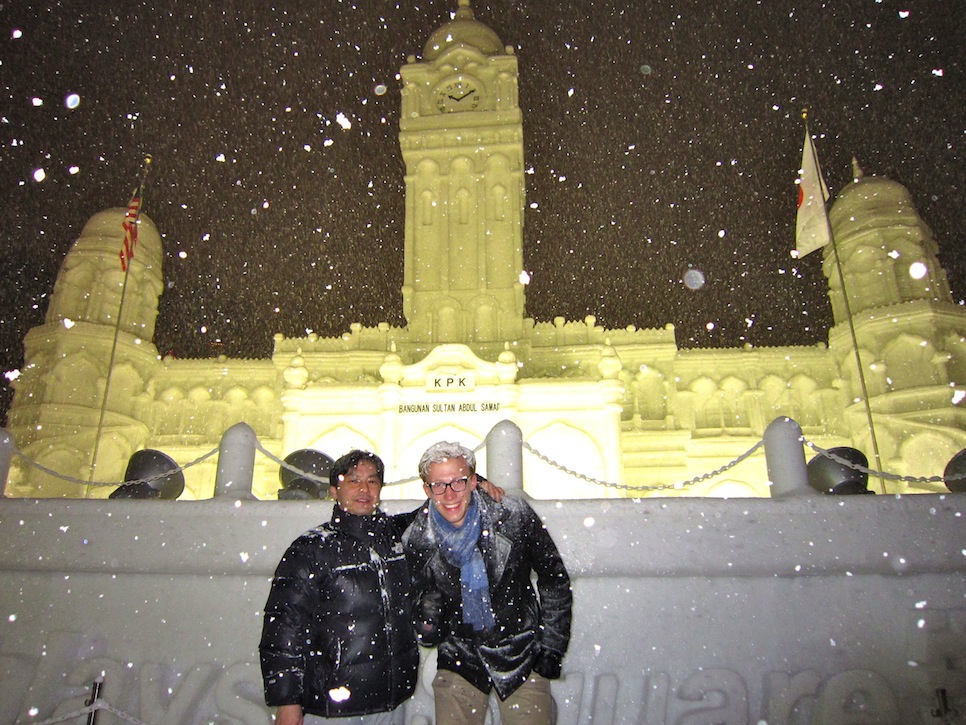
(this sculpture is of the “Sultan Abdul Samad Building” in Malaysia)
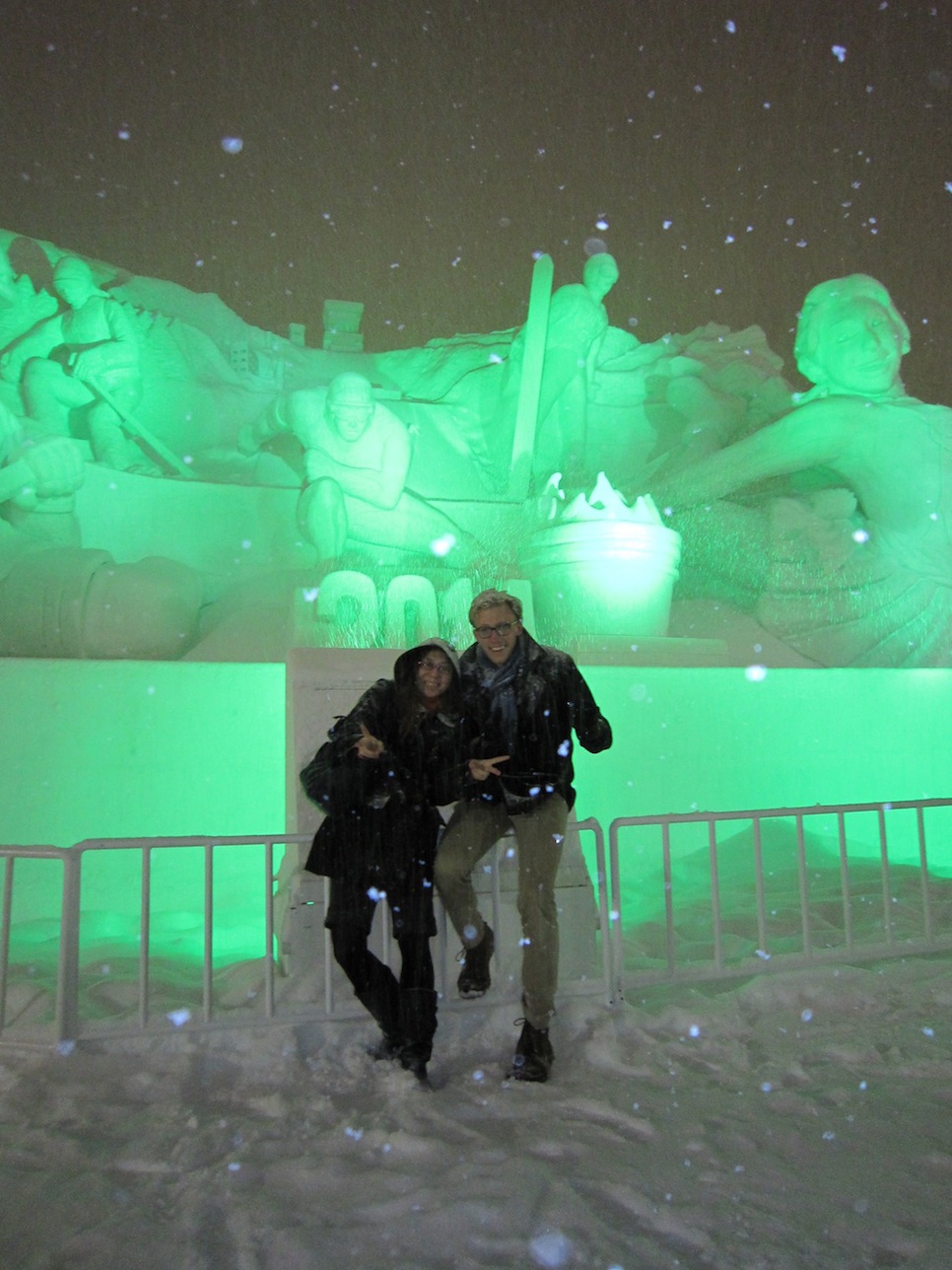
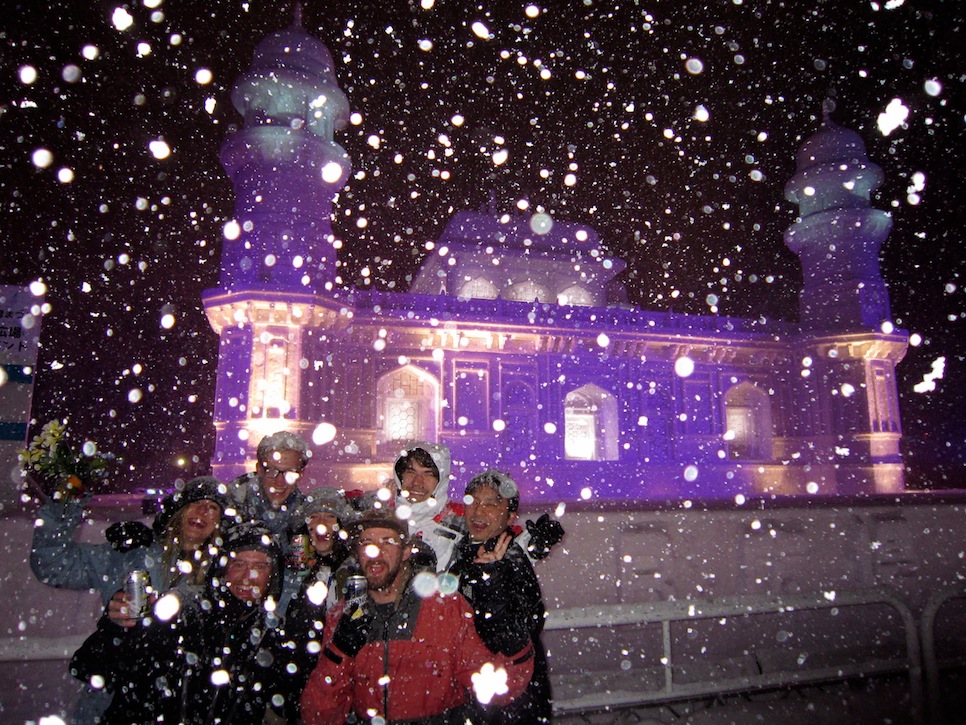
These Australians are enjoying some “chu-hais” (a type of sweet, carbonated alcoholic beverage specially designed in a Japanese lab to ensure head-splitting hangovers).
The next day we got up early and headed over to attend the Massachusetts Day event and to give my presentation.
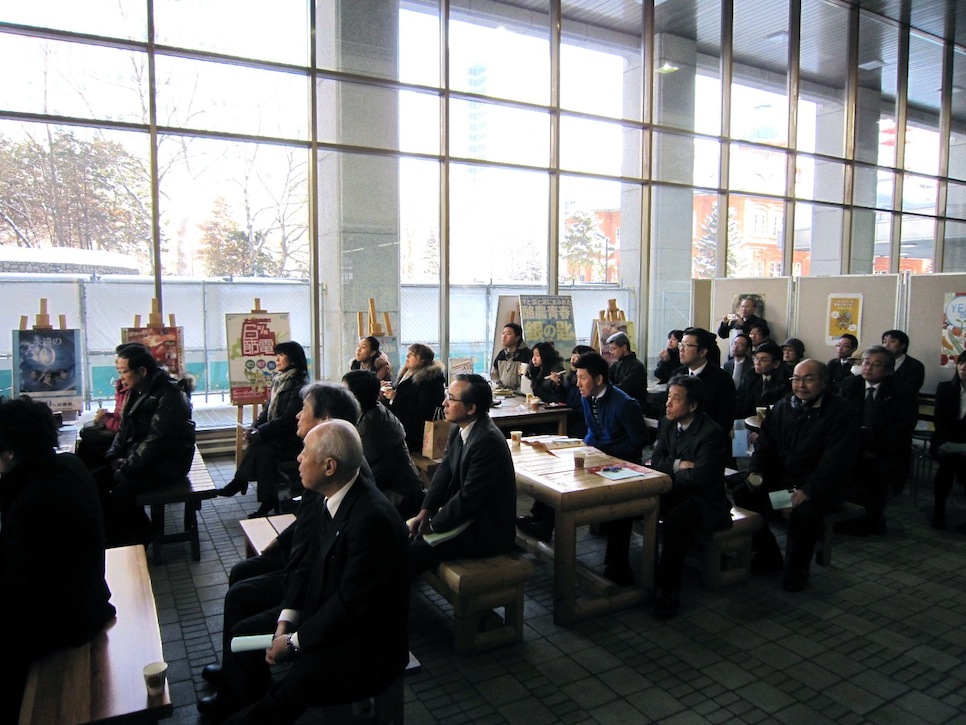
Teraya-San set up a small booth there to give out samples of Nanae apple juice. Nanae was the first place in Japan to grow apples in 1868, and they remain a major source of pride for the town. Many families in town will “buy” one of the trees at the local orchards for a year, meaning that they get the right to all apples that grow on that tree in that season. They’re that good!
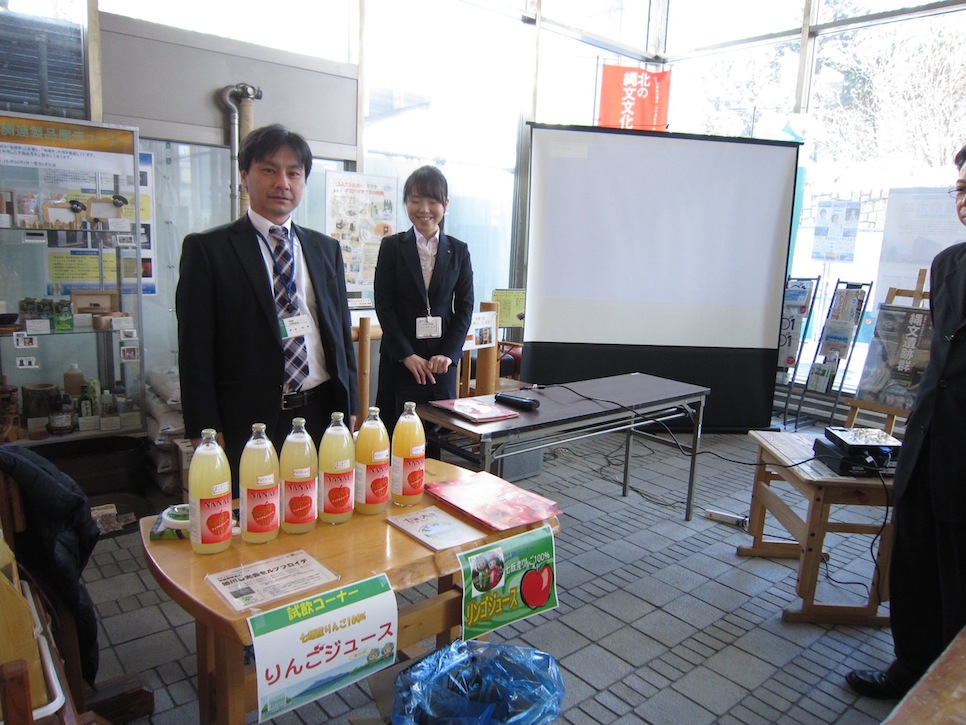
My presentation lasted for about 45 minutes. The lobby where I presented is enclosed in tall glass windows, so the light that filtered through washed out my slides a little bit. That being said, I was happy with how it went. When I present in Japanese, I’m always torn between pronouncing English names and words in the correct English pronunciation, or changing them to match the sounds that exist in Japanese. For example “Concord” becomes “Konkohh-doh” in Japanese. I usually end up doing a mix of both.

(showing the size difference between Concord and Nanae)
Below I’ve uploaded a short clip from my presentation, where I talk about the “Concord Grape”:
On our way back to the car we bumped into this little guy in front of the former Governmental Office of Sapporo. Cute (“Kawaii”) characters are extremely popular in Japan.

This mascot’s costume seemed really restrictive.
After another long drive we arrived safely back in Nanae. Mission Accomplished.
Until next time!
Ben

